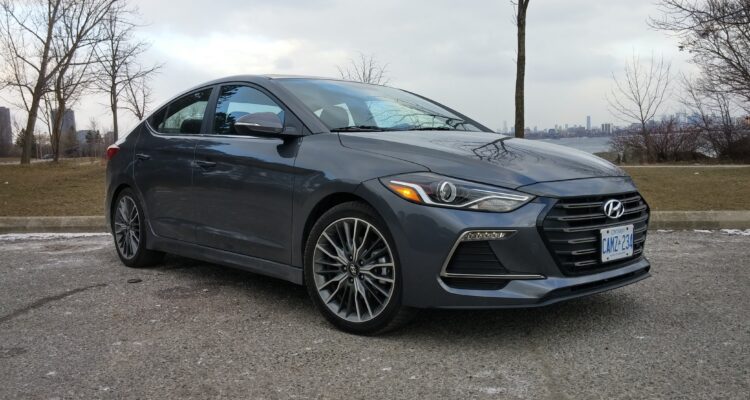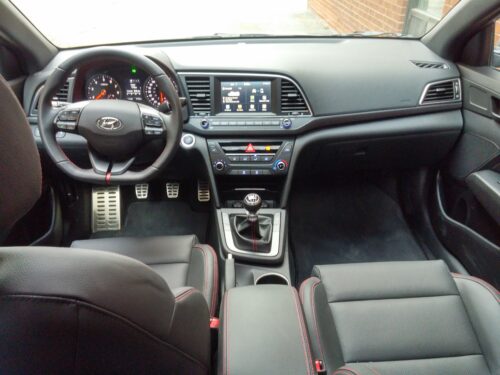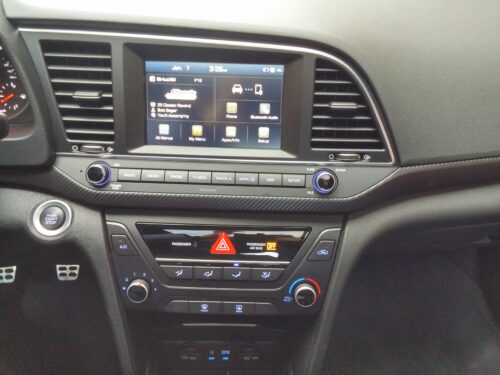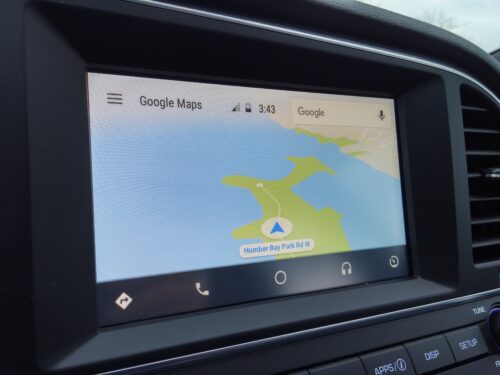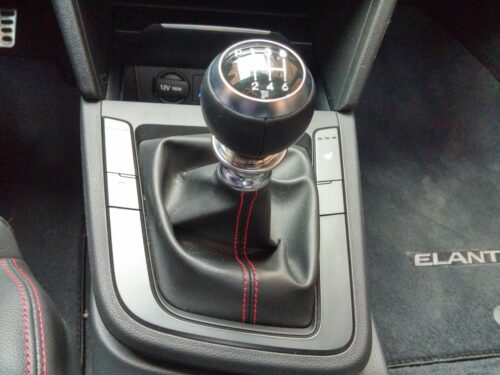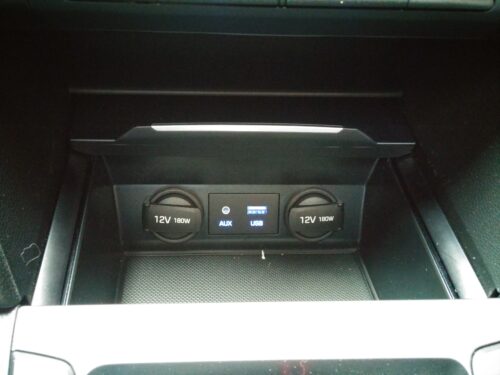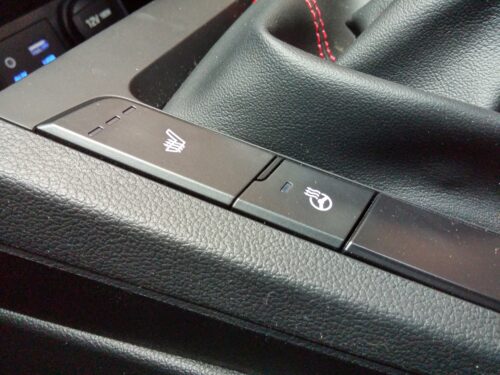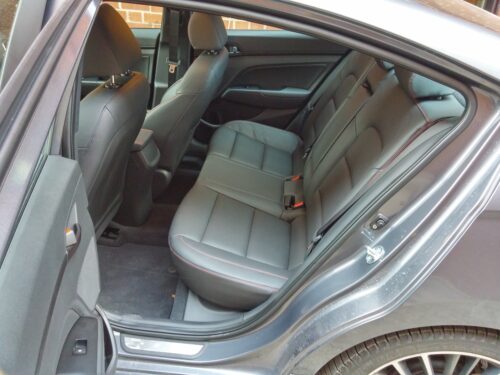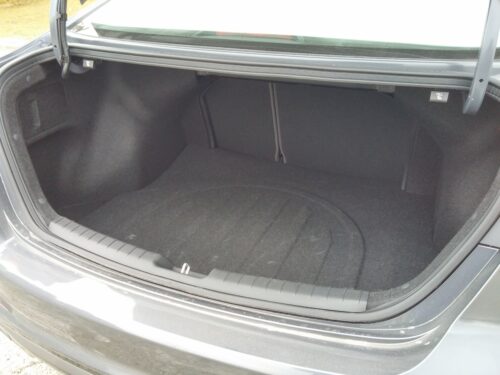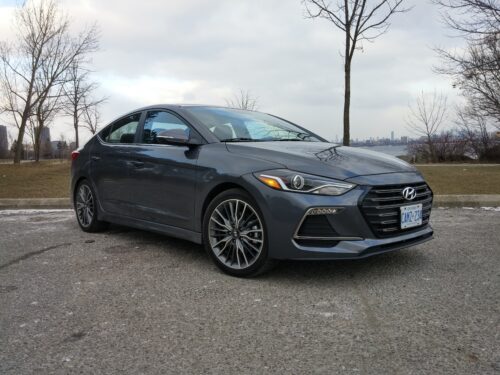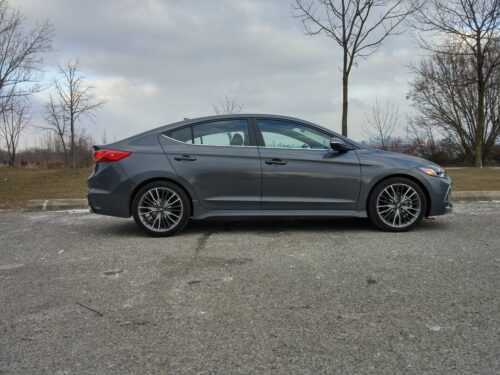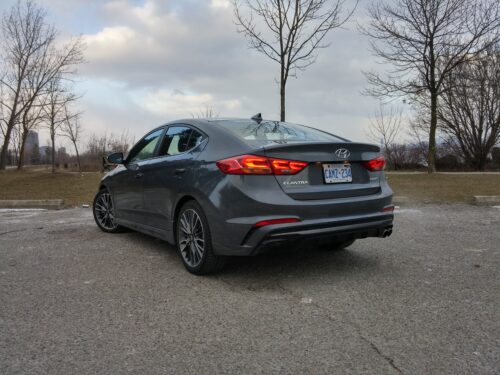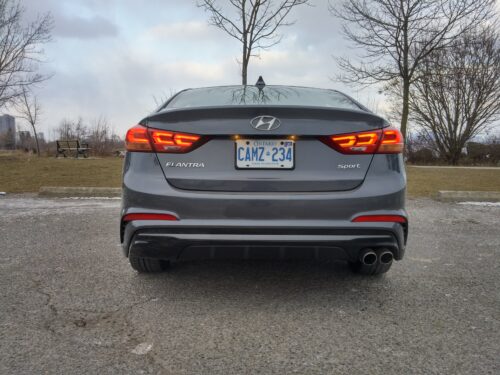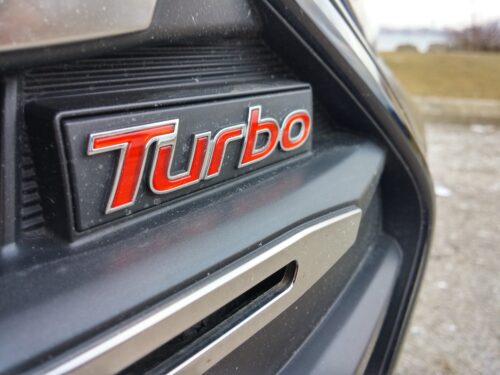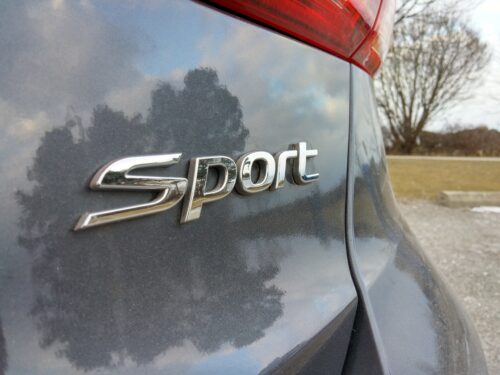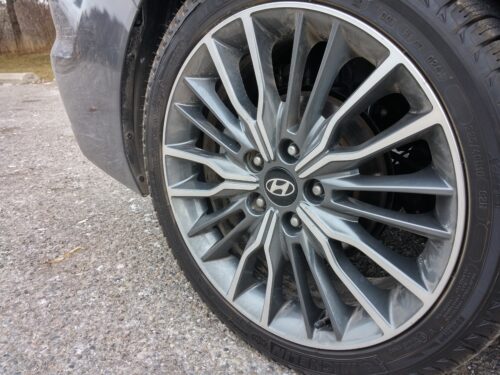The redesigned Hyundai Elantra has been doing really well since its introduction last year. It was recently awarded the title of Best New Small Car by the Automotive Journalists Association of Canada (AJAC) and has earned a spot in the top three contenders favoured to win the coveted title Canadian Car of the Year 2017. That’s how good the model’s sixth generation is and with a starting price of just under $16k, you end up with a really well rounded car in your driveway.
Last fall, Hyundai came up with a little something extra for the Elantra, offering buyers an alternate personality. The 2017 Hyundai Elantra Sport is meant to be a more spirited iteration of the popular compact sedan thanks to the same turbo engine found in the Veloster Turbo. The Elantra Sport benefits from everything the new Elantra does so well with more vitamin F for Fun. But having to spend close to $10,000 more to get a little added kick, I’m still debating whether the additional money is worth the red badging.
I really like what Hyundai has done with the new Elantra. It was true back in the fall when I drove the standard version of this Civic-fighter, and it remains true now while at the wheel of the Sport version. The styling is classy and refined, making good use of the high strength steel superstructure designed to provide additional rigidity for more precise handling. The torsion bar rear suspension has been replaced with a multi-link design which should technically give the Elantra Sport a more aggressive personality on the road. Contrasting red accents and calipers add a few subtle clues as to its newfound character, like a whisper in your ear saying there’s more to this car than meets the eye.
That said, when you slap a “turbo” badge on something and throw the word “Sport” into the mix, my outlook tends to go up a notch. As much as I think the Elantra is a great compact sedan, the Elantra Sport isn’t quite sporty enough to meet the expectations of this automotive journalist.
Just like the Elantra, the Sport version drives very smoothly and offers a comfortable, yet predictable ride. However, I find it lacks a bit of the surprise element that makes you go “Ooh, this is something else”. The steering is also reminiscent of the standard Elantra and is a little too soft under my hands where I would prefer more resistance and precise control. The rear suspension still feels wobbly – mind you, not as wobbly as the torsion bar setup – but not quite sporty enough to be tossed around in curves with absolute confidence. I have noticed in smaller Hyundai cars that a combination of bends and bumps in the road tends to make the tail waltz a little too much for my taste.
The 1.6L, four-cylinder turbo engine is rated at 201 horsepower and 195 lb-ft of torque. If you are familiar with the Veloster Turbo, then this will make you feel right at home. Power delivery is smooth and linear with just enough zest to have fun while staying under the radar. The test model I drove was equipped with a six-speed manual transmission that, without being the epitome of a short-throw sport transmission, it still manages to take full advantage of everything the engine has to offer. If you wish to learn to drive stick, this gearbox is a great place to start. It is easy to toss through the gears and precise enough so you can’t easily skip a beat. Of course, you can choose to upgrade to a dual-clutch, seven-speed automatic transmission, which is a promising addition considering this type of transmission is typically the best compromise when it comes to electronic gearboxes.
Inside, the red exterior accents have been replicated in the seats, steering wheel and gear lever stitching. A carbon fibre applique underlines the dashboard, complementing the ensemble nicely. Seating is comfortable and the roomy backseat is within the average range for this segment, meaning your passengers won’t feel crammed while sitting in the back.
The list of standard equipment is generous and includes heated seats front and back and a heated steering wheel, chrome pedals as well as Android Auto and Apple CarPlay. These applications basically turned the car into an extension of my smartphone and gave me access to music streaming, navigation and text messaging. Keyless entry, a full infotainment system with satellite radio and Bluetooth streaming, cruise control and blind spot detection are also included, plus much more.
Despite improvements made to its list of standard equipment, the 2017 Hyundai Elantra Sport falls short of the mark from my point of view. The car’s overall behaviour is very similar to the standard model. Not to say this is a bad thing considering how good the Elantra is, but it could be a bit of a letdown if you expect more from the Sport branding. In this regard, you will either be happy to have a compact sedan that, like its main competitor the Honda Civic, provides an accessible level of fun, or be slightly disappointed that the sport element hasn’t been pushed a little further down the road.
2017 Hyundai Elantra Sport
Price (before taxes): $24,999.00
Freight: $1,695.00
Configuration: front engine, front-wheel drive
Engine/Transmission: 1.6L, 4-cylinder turbo/6-speed manual
Power/Torque: 201 hp/195 lb-ft
Fuel (capacity): Regular (53 L)
Combined fuel economy ratings: 9.4 L/100 km
Observed fuel economy: 8.6 L/100 km
Competition: Ford Focus ST, Honda Civic EX-T, Mazda3 GT, Nissan Sentra SR Turbo, Volkswagen Golf GTI
Related links:
Hyundai Canada
Globe and Mail
Motor1



